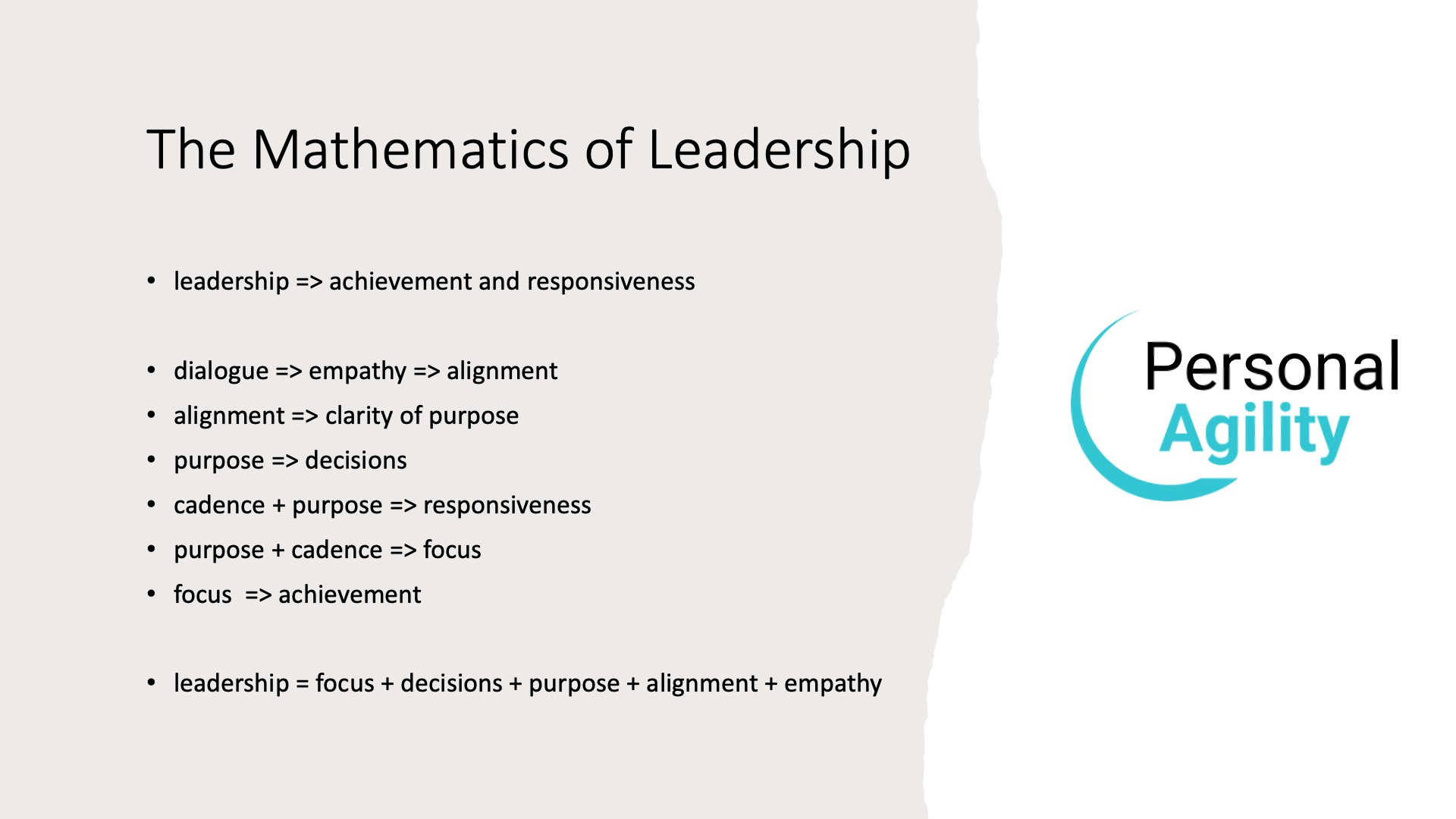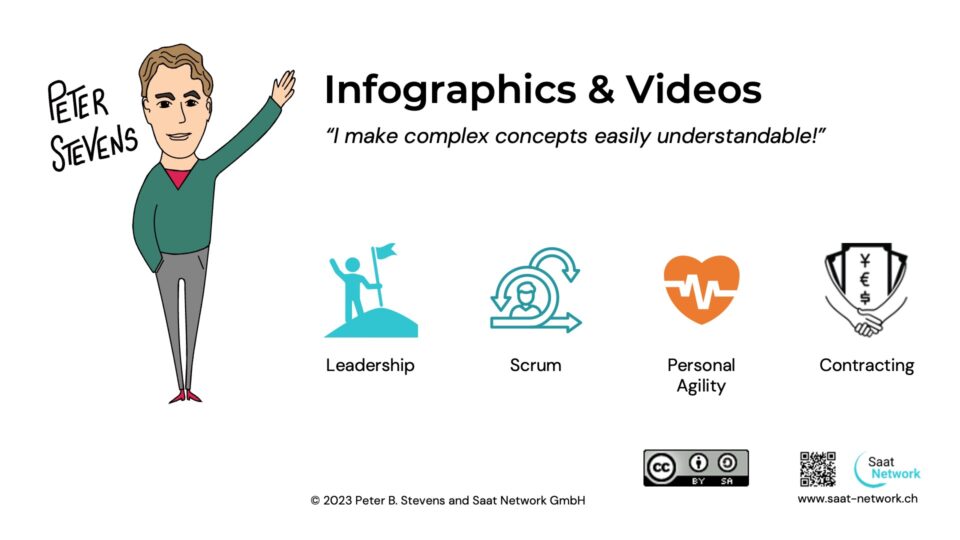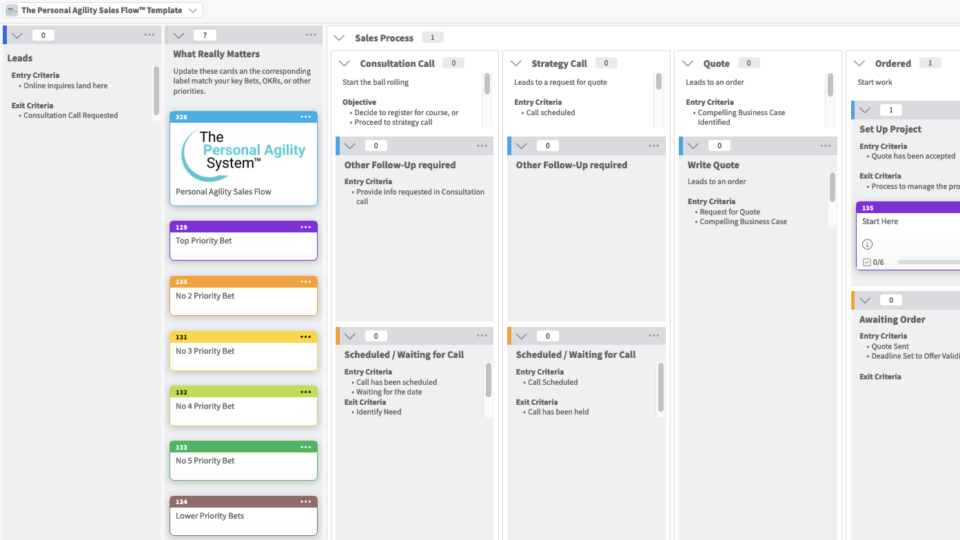
The elephant in the Agile living room
15-06-2022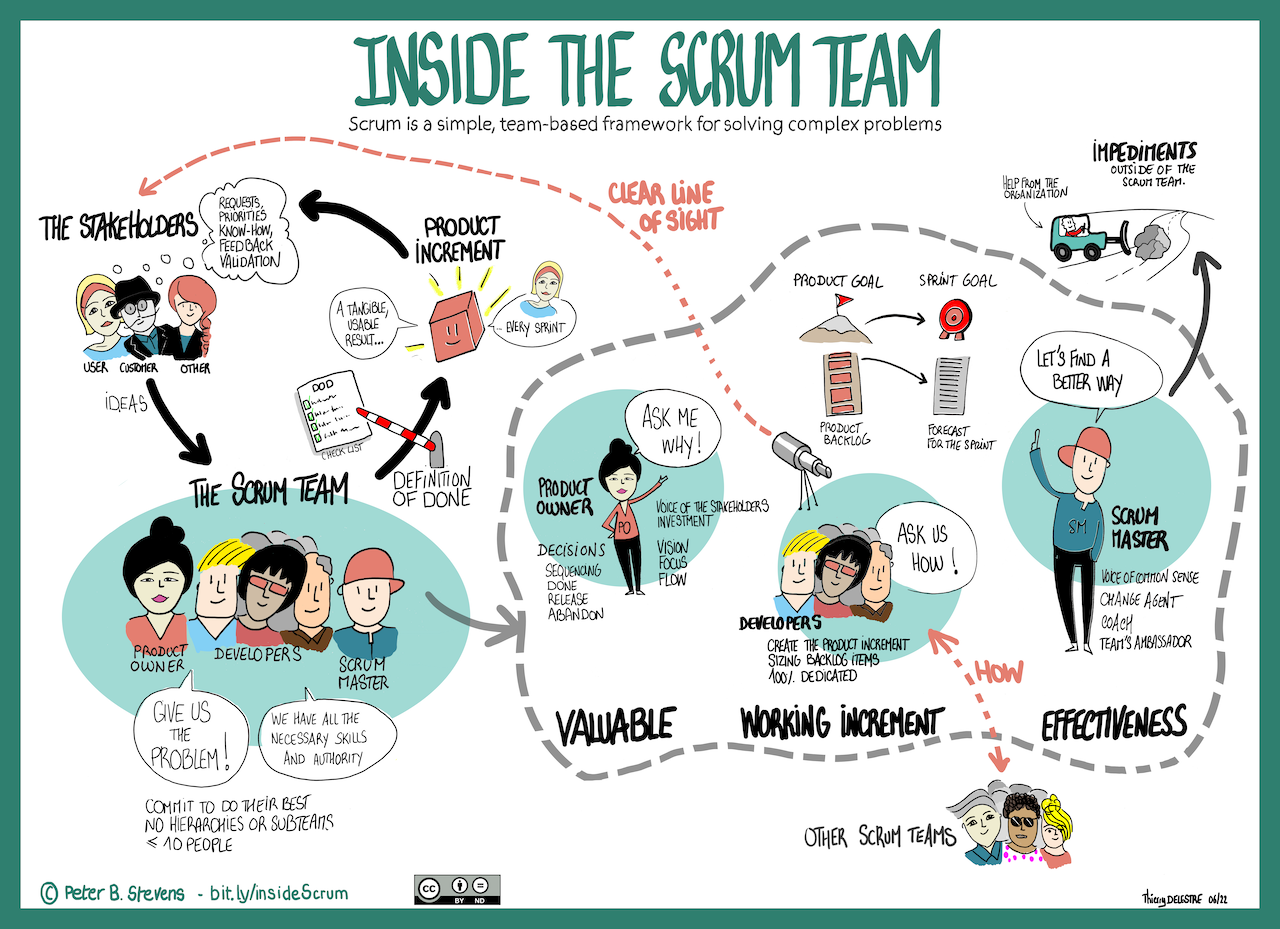
Inside the Scrum Team – Part 1
27-09-2022On LinkedIn, I have seen a number of “math of” posts in which people present the math of happiness or to other things. This led me to explore the math of Personal Agility and the math of Leadership. I’d like to share some thoughts and get some feedback.
The core elements of Personal Agility include Purpose, Celebration, Choice, Cadence, and Dialogue. These elements reinforce each other and combine to enable both self-leadership and organizational leadership.
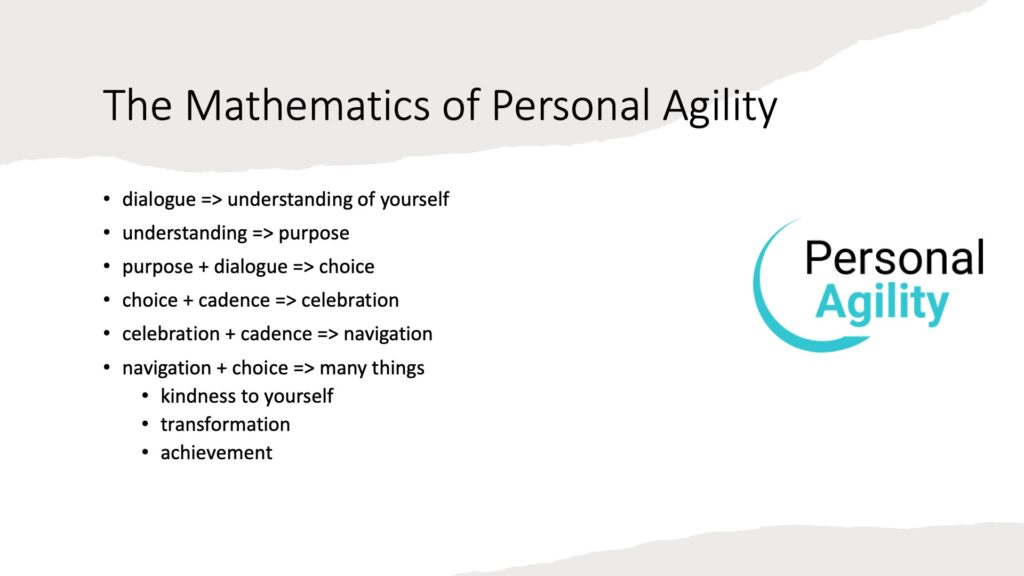
Personal Agility Enables Self-Leadership
Emergence is the process through which individual things combine to become something bigger than the sum of the pieces.
Dialogue => understanding of yourself
Dialogue enables understanding yourself and your purpose. Personal Agility starts with powerful questions about ‘what really matters,’ how you use your time, and how you want to use your time.
Understanding => purpose
Understanding enables clarity of purpose. Once you can clearly articulate what you care about, you can use that understanding to inform your decisions-making.
Purpose, dialogue => choice
Purpose and dialogue enable choice. You choose what you want to focus on and then get them done.
Choice, cadence => celebration
Choice and cadence enable celebration. Celebrating what you got done is some much more satisfying than reviewing all things that are in progress. You become happier and more energized.
Celebration, cadence => navigation
Celebration and cadence enable navigation. You understand where you are and where you are going. You are actively setting your course to achieve your goals and desires. You are no longer a passenger in your, you are guiding your life.
Navigation, choice => many things
Navigation and choice enable many things, including beating procrastination, kindness to yourself, transformation, and long-term achievement.
The Mathematics of Leadership
Personal Agility extends from self-leadership to organizational leadership because emergence doesn’t stop with the individual. The elements of Personal Agility combine to enable leadership at any level of an organization.
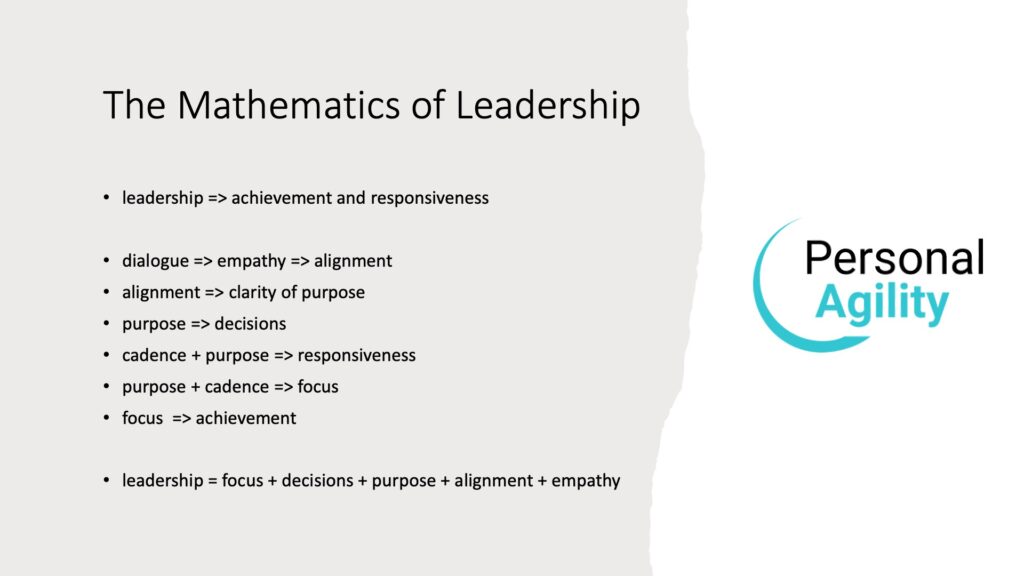
Leadership => achievement, responsiveness
A practical definition of leadership is the ability guide a group of people to achieve long-term goals and respond effectively to change. Leadership is an essential skill at any level of an organization that needs to respond changing or unexpected situations.
Leadership = focus, decisions, purpose, alignment, and empathy
The enabling skills of leadership are focus, decision-making, purpose, alignment, and empathy. How do the pieces combine to enable leadership?
Dialogue => empathy => alignment
If dialogue with yourself can enable kindness to yourself, then the same dialogue can enable empathy with others.
Dialogue enables empathy, and empathy enables alignment. “I listed to you, you listen to me, and we care about what the other says (even if we don’t agree on everything).” Empathy with and among stakeholders enables them to speak honestly about true issues and identify areas of agreement.
Alignment => clarity of purpose
Alignment enables clarity of purpose among a group of stakeholders, be that members of a development team or a board of directors. Often people are more in agreement than they think they are, and even disagreements can be re-framed as agreement on the problem. The process of becoming aligned is the process of creating agreement on the bigger picture of what really matters.
Once an organization achieves clarity of purpose, then the basic math of Personal Agility also applies to larger groups. Cadence and celebration enable navigation. Navigation enables choice, which in a group context, is properly called decision-making.
Purpose => decisions
Clarity of purpose enables clear decisions that are supported by all the key stakeholders. A team or organization can choose a direction and move forward with minimal internal resistance.
The key to effective responsiveness is the ability to make good decisions, which in turn requires knowledge of the big picture – the purpose, or “What really matters.”
Cadence + purpose => focus and responsiveness
Cadence, that is celebration and choice at short, regular intervals combined with an overarching clarity of purpose enable groups of people to focus current activities to support the longer term goals. A regular cadence of celebrate-choose-do also enables organizations to react effectively to new information, even realigning on new goals if that is appropriate.
Focus => achievement
Focus enables achievement of long-term goals. Holding focus is easiest when there is genuine alignment around a shared purpose that is supported by all important stakeholders.
Putting it all together
The basic building blocks of personal agility – purpose, celebration, choice, cadence and dialogue combine to create the basic building blocks of effective leadership: empathy, alignment, purpose, decisiveness, and focus. These in turn can combine to enable both achievement and responsiveness in an organization.

